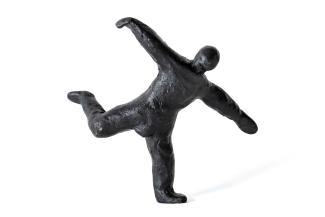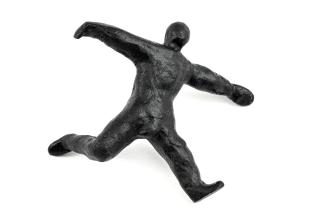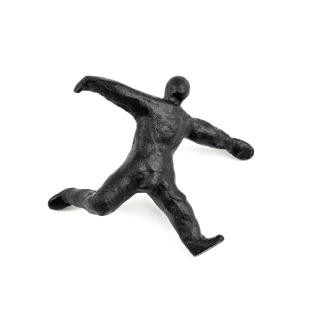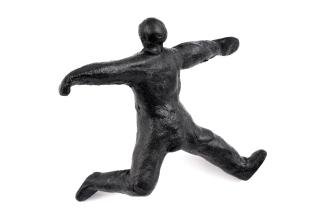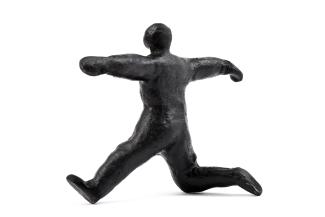Unidexter, 2024
Antony Gormley (b. 1950) is widely acclaimed for his sculptures, installations and public artworks that investigate the relationship of the human body to space. His work has developed the potential opened up by sculpture since the 1960s through a critical engagement with both his own body and those of others in a way that confronts fundamental questions of where human beings stand in relation to nature and the cosmos. Gormley continually tries to identify the space of art as a place of becoming in which new behaviours, thoughts and feelings can arise.
Antony Gormley has had a number of solo shows at venues including The Royal Academy of Arts, London (2019); Delos, Greece (2019); Uffizi Gallery, Florence (2019); Philadelphia Museum of Art, Philadelphia (2019); Long Museum, Shanghai (2017); Forte di Belvedere, Florence (2015); Zentrum Paul Klee, Bern, Switzerland (2014); Centro Cultural Banco do Brasil (2012); Deichtorhallen Hamburg; State Hermitage Museum, St Petersburg (2011); Kunsthaus Bregenz (2010); Hayward Gallery, London (2007); Kunsthalle zu Kiel; Malmö Konsthall (1993); and Louisiana Museum of Modern Art, Copenhagen (1989). Permanent public works include the Angel of the North (Gateshead, England), Another Place (Crosby Beach, England), Exposure (Lelystad, The Netherlands) Chord (MIT – Massachusetts Institute of Technology, Cambridge, MA, USA). He has also participated in major group shows such as the Venice Biennale and Documenta 8, Kassel, Germany. Gormley won the Turner Prize in 1994 and has been a member of the Royal Academy since 2003. He was made an Officer of the British Empire in 1997 and knighted in 2014.
Antony has said:
I like the idea that an object made in the hands doesn't have a context other than the hands, where their mutual movement becomes the space in which the object arises.
You have to hold whatever you're making in a position more or less at the same height as your heart. Wax takes the warmth of the body and becomes more and more malleable.
The work is naturally crude. I have used no tools other than my fingers. At some point I had to put it down. The body is portly, but in coming to land on the hard surfaces of our made world, it perhaps begins to have poise...
At home and after a meal, we often make things out of clay around the kitchen table. The resulting forms are always connected to the life and feelings of the maker. People are sometimes shy, but if you give the clay time, you can find pleasure and grounding in this simple activity. It's a conversation with earth.
Unique work, cast in bronze, approx. H: 7.2 cm x L: 7.6 cm x D: 3 cm
SOLD
